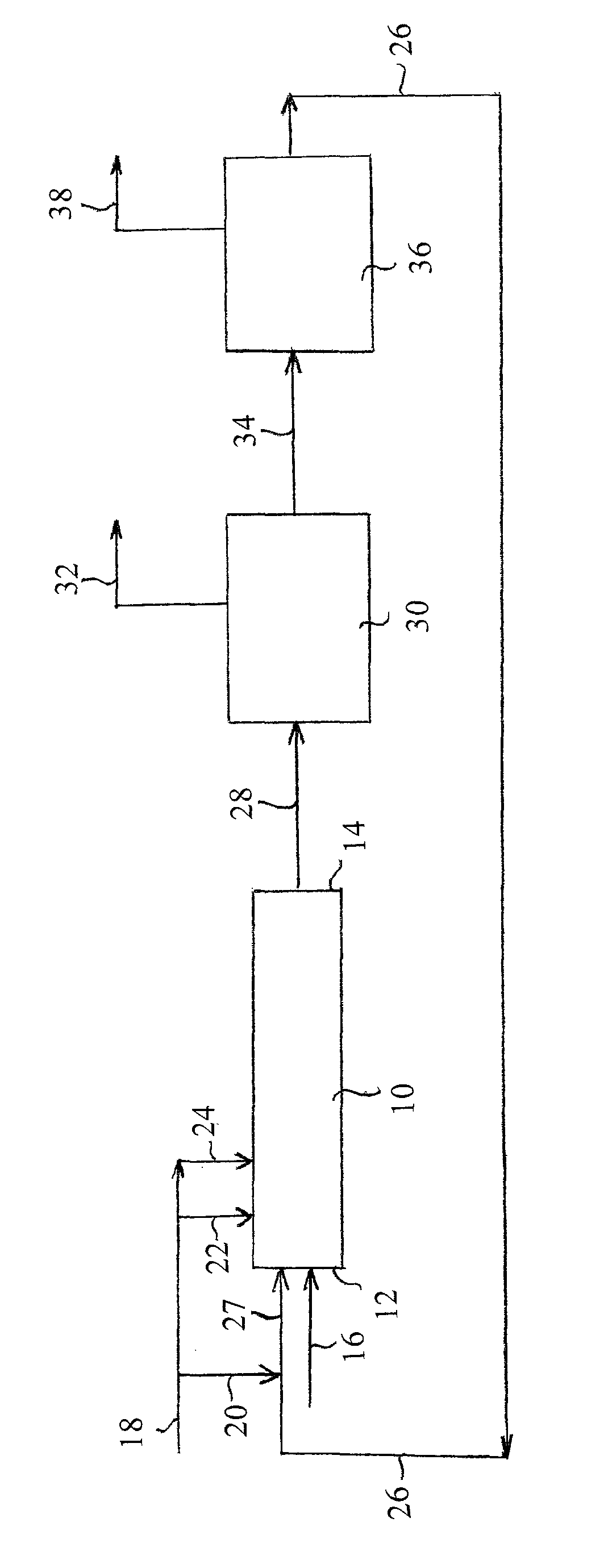Method for reducing the formation of by-product dinitrobenzene in the production of mononitrobenzene
a technology of mononitrobenzene and dinitrobenzene, which is applied in the field of manufacturing mononitrobenzene, can solve the problems of further reducing the yield of product mononitrobenzene, and reducing the yield of benzene to mononitrobenzene. yield loss, energy input, and the effect of improving the reaction yield
- Summary
- Abstract
- Description
- Claims
- Application Information
AI Technical Summary
Benefits of technology
Problems solved by technology
Method used
Image
Examples
example 1
[0017]As a control experiment, an industrial adiabatic plug flow reactor producing nitrobenzene was operated at steady state under the following conditions: sulfuric acid strength at the entrance to the reactor was 70 wt %; all benzene and nitric acid feed were introduced at the reactor entrance; the reactor entrance temperature was 100° C.; the nitric acid concentration in the mixed acid at the entrance to the reactor was 1.6 wt %; benzene was introduced in molar excess. Under these conditions the produced mononitrobenzene contained 241 ppm of dinitrobenzene.
example 2
[0018]The industrial reactor of Example 1 was modified by splitting the nitric acid feed. The split was as follows: 80% of the nitric acid was introduced at the entrance of the reactor, and the remainder of the nitric acid was introduced at a location approximately one third up the length of the reactor. The other reaction conditions were the same as in Example 1. Analysis showed that the produced mononitrobenzene contained 205 ppm of dinitrobenzene.
example 3
[0019]The reaction of Example 2 was repeated while changing only the ratio of the nitric acid split. The nitric acid split was 60% at the entrance to the reactor with the remainder introduced one-third up the length of the reactor. Analysis showed that the produced mononitrobenzene contained 177 ppm of dinitrobenzene.
PUM
| Property | Measurement | Unit |
|---|---|---|
| temperature | aaaaa | aaaaa |
| temperature | aaaaa | aaaaa |
| temperature | aaaaa | aaaaa |
Abstract
Description
Claims
Application Information
 Login to View More
Login to View More - R&D
- Intellectual Property
- Life Sciences
- Materials
- Tech Scout
- Unparalleled Data Quality
- Higher Quality Content
- 60% Fewer Hallucinations
Browse by: Latest US Patents, China's latest patents, Technical Efficacy Thesaurus, Application Domain, Technology Topic, Popular Technical Reports.
© 2025 PatSnap. All rights reserved.Legal|Privacy policy|Modern Slavery Act Transparency Statement|Sitemap|About US| Contact US: help@patsnap.com

